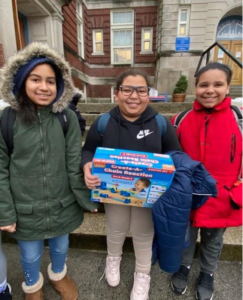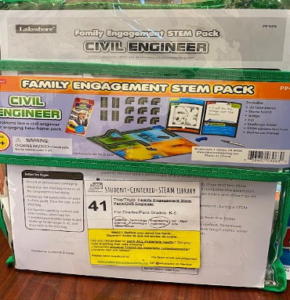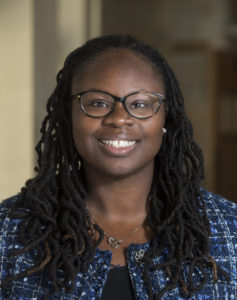Over the past four years, the Winship School’s instructional focus has been to create student-centered learning environments for all students, all the time. This focus has been a major driver of our school’s success. As a result of this intentional focus and our aligned efforts, we were able to enhance our capacity to meet students’ academic, social and emotional needs.
As learners themselves, teachers and staff received professional development in curriculum implementation, access to professional learning opportunities, coaching support feedback through a peer observation model, and techniques to better engage diverse families. These efforts produced important shifts in our learning environment.
As a result, our students—we call them scholars—showed more excitement about learning. They asked more often what the day held for them in their classes. This excitement spilled over into after-school, home and community learning as well. For example, more families began inquiring with me and staff about our instructional focus which often involved discussions about how to inspire similar learning experiences in the afternoons and evenings after school. We realized we had an opportunity to boost learning outside of school and deepen our engagement with families and the community.
That’s when we built our student-centered STEAM-based library.
The student-centered STEAM-based (Science, Technology, Engineering, Arts, Math) library at the Winship School is a resource for teachers and families that encourages student-centered learning both in and out of school. The library consists of kits that can be borrowed by families so that students can experience hands-on STEAM activities at home and have opportunities to engage in a variety of exploration experiences with family members. Teachers may also check out STEAM kits to enhance classroom learning stations and provide opportunities for students to ask questions and collaboratively solve problems. Information about the student-centered learning environment is included with all borrowed items.


How the Student-Centered STEAM Library works
- A student informs their teacher that they are interested in checking out an item.
- Once teachers are notified, they bring the student to the room where the Home Library is stored. Then they help the student select the item the student would like to check out.
- The student is given one week to keep the item at home.
- When the item is returned, the feedback slip from the parent is reviewed and the items are wiped down and placed back into the Home Library.
These learning tools, available to all students at the school, offer opportunities to continue learning outside of school about skills and STEAM standards presented in school. There are a wide variety of STEAM kits available that are appropriate for multiple grade levels and student interests. These kits support student-centered-learning at home, inspire curiosity and experimentation, allow parents, guardians and families to learn alongside students, and contain different materials and supplies to keep kids coming back for more.
Learn more about the student-centered STEAM library and the wide variety of STEAM kits available for different grade levels.
Each learning tool that is checked out is accompanied by a family checklist. This checklist of questions and prompts includes suggestions for how families can support learning at home. The questions supplied in each kit are designed to help children think critically and creatively and to collaborate with friends and family to solve problems. This encourages family members to engage in rich discussions at home, and it helps energize students to come back to school eager to share what they learned.
As we continue to strengthen the school-home connection and deepen family engagement, the school will continue to operate the student-centered library with hopes to expand the library to even more offerings. The school also plans to eventually offer student– and teacher–generated learning items to enhance our offerings even more.

Mona Ford Walker is a Students at the Center Distinguished Fellow with the Student-Centered Learning Research Collaborative at KnowledgeWorks. She is the principal of the Winship Elementary School in Brighton, Massachusetts where she proudly serves a population of 250 students from kindergarten through fifth grade.
Previously, Mona served as assistant principal for two years at the Dever-McCormack Middle School in Dorchester, Massachusetts, where she focused on student and teacher inquiry and meeting the diverse academic and social/emotional needs of students.